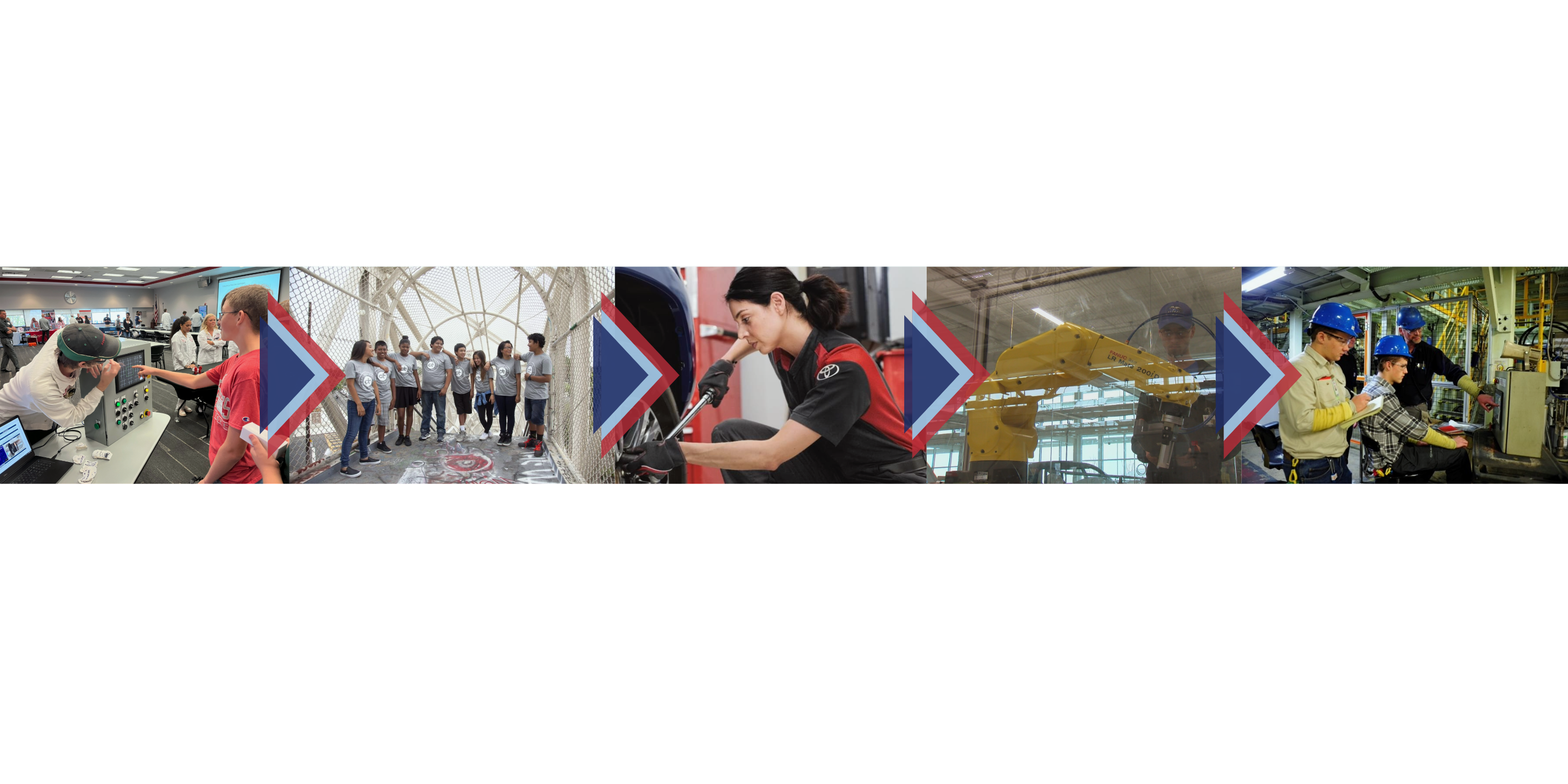By Alex Willis, Senior Manager, Industry and Public Affairs
For over 50 years, Japanese-brand automakers have been working to research, engineer, test, build, and ultimately sell vehicles in the U.S. These longstanding commitments are central to Japanese automakers’ foreign direct investment (FDI). Their investments have come to fruition through attracting, identifying, developing and retaining a well-trained and dedicated workforce. Japanese-brand automakers have long recognized the enormous value of a highly skilled workforce that can adapt and grow in this constantly changing industry. As the need for talent has increased over the years, and the industry continues to face workforce availability challenges, Japanese-brand automakers are deepening their commitment to develop talent throughout the workforce pipeline. This effort doesn’t only ensure that they have access to well trained workers, but that the U.S. auto industry and society in general can reap the benefits of this long-term commitment to the U.S. workforce.
On a fundamental level, JAMA members’ good-quality FDI in the U.S. supports careers and contributes to U.S. competitiveness. This reality is clearly demonstrated by Japanese-brand automakers’ sustained commitment to nurturing various initiatives spanning the entire talent pipeline, from K-12 education, technical training schools, community college partnerships, and collaboration with four-year universities. In celebration of Workforce Development Month, we invite you to learn about some of these initiatives and how Japanese-brand automakers are developing the U.S. workforce of the future by opening doors to meaningful opportunities for many.
The Mazda Foundation and FUSE Studios have partnered together since 2021 and are working to bring STEAM education programming to 16 southern California schools. FUSE facilitates student exploration and learning through hands-on, interest-driven challenges inspired by real-world STEAM and design practices. In the Mazda challenge module, students focus on the principles of Mazda’s design and engineering and get hands-on experience using auto-cad software and 3D printers. In 2024, Mazda deepened its commitment with a new grant to help expand the program to more schools.
The Toyota 4T Academy is a national high school pathway program designed to provide high school juniors and seniors with an innovative education experience, pairing hands-on learning with on-the-job training at Toyota. Students in the program are trained in high-tech and high-demand skills needed for modern manufacturing, all while earning a paycheck and their high school diploma. The program originally started in Indiana in 2020 and later began operating in West Virginia and Mississippi. In 2024, Toyota brought its 4T Academy to Kentucky, further expanding an important program for developing the local workforce.
In looking to address the critical shortage of dealer technicians, Subaru has been partnering with technical training schools and community colleges across the country to create a unique partnership between Subaru of America, the retailer, and high-performing ASE Education Foundation-accredited secondary and post-secondary schools. This effort has taken shape as Subaru University. By infusing Subaru’s Web-Based Training (WBT) into the existing curriculum, students can take most of the entry-level training that is required of all Subaru technicians. This program, which comes at no additional cost to the students, allows retailers to take an active role with their local partner schools in shaping the technicians of tomorrow.
In January 2017, Nissan opened its training center in partnership with the College System of Tennessee at the Tennessee College of Applied Technology (TCAT) Murfreesboro campus. Both public TCAT students and employees from the Nissan Smyrna plant are enrolled at the education and training facility and learn various skills that are vital to the region’s success and in demand with employers. These include automotive technology, collision repair, electrical maintenance, mechatronics, and welding.
Honda and Ohio State University have had a formal partnership since 2000, but they have long worked together with much of the effort centered on cooperation around the use of the Transportation Research Center (TRC). Over the years, this relationship has grown to cover many areas including a unique capstone project for Ohio State engineering students. Through the program, students are encouraged to push boundaries and deliver new designs and products in a real-world setting. Additionally, as Honda looks to electrify their next generation of vehicles, the long-standing partnership will serve as a great resource to train the next-generation workforce in advanced manufacturing techniques.
These programs, and many others, are proven pathways toward developing a competitive automotive workforce in the U.S. and are the building blocks to meaningful jobs and enduring careers. Therefore, please join us in celebrating the entire spectrum of the automotive and advanced manufacturing workforce, those who are making their way toward rewarding opportunities in these fields and all the educators, trainees and mentors who provide valuable guidance throughout the talent pipeline.
If you’d like to learn more about JAMA members’ U.S. organizations’ workforce development activities, please visit us at JAMAinAmerica.org and engage with us on X and LinkedIn.

